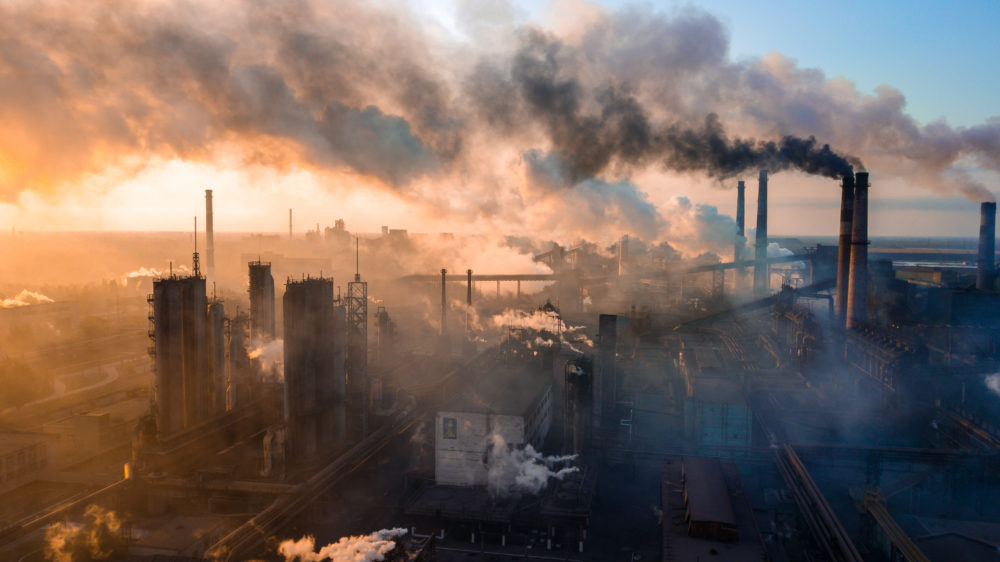One-Third of Americans Live with Unhealthy Levels of Air Pollution: Report
Polluters often set up shop near communities with large populations of people of color, leading to minorities being disproportionately affected by unhealthy levels of air pollution, the study indicates

Nearly 120 million people in the United States live in areas with unhealthy levels of air pollution, according to a new study released by the American Lung Association.
The research indicates roughly 1 in 3 Americans live in highly polluted areas, which can lead to serious health problems like asthma, heart disease, and a shortened life span.
The findings were published in the American Lung Association’s State of the Air 2023, which is an annual report that analyzes air quality levels collected at monitoring sites across the United States, focusing on ozone and fine particulate matter.
Minority Communities Disproprotionately Impacted By Unhealthy Air
Despite vast improvements in air quality since the 1970s, when the Clean Air Act was signed into law, millions of Americans are living with unhealthy levels of pollution, and people of color are disproportionately affected.
The American Lung Association used the air quality monitoring data from 2019 through 2021 to assign daily and long-term grades for air pollution and rank the worst cities and counties.
According to the findings, 36% of Americans, or nearly 120 million people, live in areas of the country with unhealthy levels of air pollution, and nearly 72% of the residents in counties with the worst air pollution are people of color. Other studies have confirmed that polluting facilities are often placed near communities which are home to a large proportion of people of color. Combating that trend has become a major environmental justice issue.
Despite the vast number of people affected by unhealthy levels of air pollution, the study also indicated 17.6 million fewer people in the U.S. are breathing unhealthy air compared to last year. Levels of ozone have also improved.
Yet, more than 63 million people live in counties with failing grades for air pollution, the researchers warn.
Regional Air Pollution Differences
Roughly 25% more counties received an A grade for air quality and lower levels of air pollution. But 100 million people in the U.S. still live in counties that got an F grade for high levels of smog.
Smog is largely made up of ozone. It is produced by cars, fossil fuel production, and other manufacturing facilities.
Cities in the west and the southwest are the most affected by ozone pollution according to the findings. Of the 25 most polluted cities, 10 are located in California. Other cities include New York, Chicago, and Hartford, Connecticut.
The areas with the worst ozone pollution are the Phoenix-Mesa area in Arizona, Los Angeles, Long Beach, Visalia, Bakersfield, and Fresno in California. These areas, along with Sacramento, San Jose, and San Francisco, are also affected by high levels of particulate matter, the study indicates.

Did You Know?
Millions of Philips CPAP Machines Recalled
Philips DreamStation, CPAP and BiPAP machines sold in recent years may pose a risk of cancer, lung damage and other injuries.
Learn MoreParticulate matter is made up of tiny droplets of dust, soot, and smoke that are emitted from fossil fuel production, cars, construction, and wildfires. Particulate matter 2.5 is made up of particles smaller than 2.5 micrometers, or 70 times smaller than a single human hair.
The tiny particles are easily inhaled into the lungs and enter the bloodstream, which can lead to serious health side effects. Particulate matter kills roughly 30,000 Americans every year.
In years past, many of the areas affected by unhealthy levels of air pollution and failing grades were largely in the East and parts of the South. Now, most of the areas affected by air pollution are in the West, which is disproportionately affected by wildfires.
Researchers warn it is key for communities to work together to improve air pollution and make decisions that help to improve air quality. Local, state, and other government agencies must focus on improving air quality monitoring, introducing green infrastructure, investing in zero-emissions vehicles, and reducing emissions at ports, the researchers concluded.
Get more articles like this sent directly to your inbox.
"*" indicates required fields




0 Comments